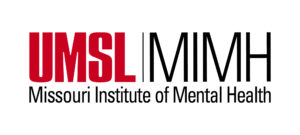Crisis Text Line
Text HOME to 741741 for free 24/7 crisis in the US
The Missouri Institute of Mental Health’s (MIMH) mission is to improve and transform mental health outcomes through innovative research and program development, program evaluation, community outreach, and professional training. Our target population is incredibly varied based on the wide scope of work performed. A broad definition would be any individual impacted by, at risk for, or living with a mental illness, behavioral health condition, traumatic brain injury, or HIV/AIDS, as well as all sectors who work with these individuals from policy-makers to funders to direct-service workers.

Text HOME to 741741 for free 24/7 crisis in the US
1-800-799-4889 (TTY)